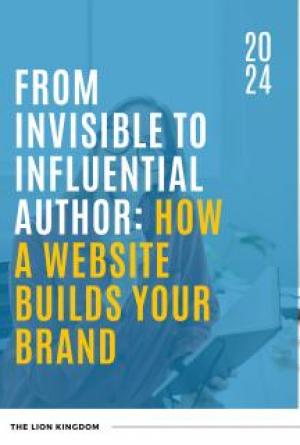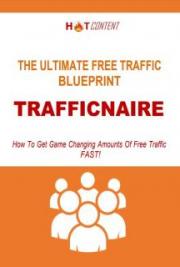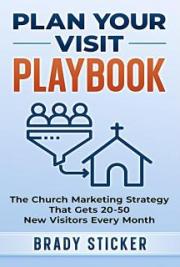Introduction
Hello, my name is Sean Mize. When I first got started marketing online, I was very disappointed that there weren’t more entry-level books available that were thorough. It seemed that all the inexpensive books left a lot to the imagination. I have learned the art of internet marketing primarily through trial and error, and want to share some of what I have learned with you today.
A lot of what you may have seen online that actually looked like it could provide you the answers you need, was a bit pricey. Alot of the better and more complete products on the web can range up to a few thousand dollars. And that is money well spent, if you have it and are serious about learning the business of internet marketing.
However, I am assuming that the average reader of this book is on a budget, so this book is written with the intent that you can get started, learn what you need to know, and begin making money for a few hundred dollars.
The Leverage Plan
A lot of basic services that you will need to get started on the web such as web hosting, web templates for your web site, sales materials, autoresponders (automated email services), credit card services (so you can take credit cards), and even products to sell can be achieved for very little up front, or even the first 30 days free. They are designed that way so you can try them out. The companies are willing to give you their service for free for the first 30 days because they know that if you are making money after the 30 days, then you will continue to pay for their service after the trial period.
Getting Started
The very first thing you need to do, before you get started online or with this step-by-step system, is to take some time alone and think about what you really want out of the internet. What do you want? Do you want to make an extra $500 per month for a car payment? Or do you want an extra $2000 per month for a mortgage? Or do you want to make $20,000 a month or more, and spend time traveling? Perhaps you wanted for a long time to work with inner-city kids or with children in Africa or teachers in China, but have never had the resources to do it.
You see, you will always get what you really want. If all you want is a new car (and that’s OK), that is all you will get. But if you genuinely have a burning desire to make a quarter of a million a year, you can have that too. It will require a lot more work than the new car, but the most important thing is your belief that you can do it. This book will only give you the directions, and tell you how to create the foundation, the framework. You will, through sweat and creativity and testing and late nights, make the big money happen. If you just want the car, you can probably do that in a few hours a week.
Step 1: Decide What to Sell
The next thing you need to decide is what are you going to sell or to market? Unless you are getting into internet marketing for charity purposes, and if you are reading this I imagine that’s not the case, you will have to sell something.
What are you interests? Now you may be thinking, well I just want to sell something that is going to make me a lot of money. That sounds really good right now, but when you are working late into the night and early in the morning on your web project, you will quickly tire if you aren’t personally excited about the product you are marketing.
Choose a product area that excites you, that you can really get into selling, an area where you really believe there aren’t enough choices.
The next thing you will do is go online and find a solid product in the same area of interest that you want to create a product (but not the same product) and become an affiliate of that product. In this way, while you are creating your new product, you will getting a feel for the people who purchase that product. You can communicate with them, finding out what they like about the current products on the market, and what they dislike about them. This will help you create a much better product than if you are not in touch with the market.
Step 2: Create your own product
First, take out a sheet of paper and write down 10 topics that you have some general knowledge about, for each of the areas of interest you have. Next, write at least 3 sub topics underneath each topic, so you will have at least 30 sub topics, or ideas.
Once you have broken all of the different subjects about which you could write, into outlines, then you must decide which will be best. Take a look at all of them. Which appears to have more information? Which topics do you appear to have more first-hand knowledge in? Which topics appeal to you the most?
Once you have chosen a topic, take each of the subtopics you created earlier and write out at least 5 things you can write about each of them---so you will have about 10 areas of knowledge, 30 sections of information (subtopics), and 150 individual ideas.
Now look at your list. Do you think you can write a paragraph or two about each of the individual ideas you have marked? Of course you can! And if you write a full page about each individual idea, and you should be able to, you will have around 150 pages of content!
Now, I will have to say this now. It is far more important that everything you write is useful information that will truly help convey from you to the reader (the purchaser or your book) your expertise, than to write a long book. It would be better to write a book that has 30 pages but is worth $100 to the reader than to write a 200 page treatise that is only worth $10, if that.
At this point, just start writing. Type all the topics, areas of knowledge, sections, and individual ideas into a word processing program such as Word. The reason you are going to type them all in now is so that you can start by writing about one particular idea at a time, and actually type it into the program.
Now, begin to write about the topics about which you already have the most information. Once these are finished, you may need to do some research on some of the remaining topics before you write about them. Once you have finished writing about all of the topics, take a look at the order in which you have placed the topics---you may need to rearrange that some.
The next step is going to be to proofread your book for spelling, grammar, and the continuity of ideas from the beginning to the end.
Next, you need to add a table of contents and number the pages.
Perhaps at this point you are realizing that writing this ebook is going to be more work than it looked like at first! That is normal, but I want to recommend a fabulous ebook- writing course that will make things a lot easier: Ebook Writing Course
Step 3: Upload Ebook Product to PDF
Next, you need to make your book available in PDF form. PDF is a universal form that just about every computer can read, and it looks real professional (this is a PDF). The universal standard these days is Adobe Acrobat. They have a great trial program, where they give you 5 downloads for free, and then you can subscribe for something like $10 per month and get as many PDF conversions as you need. (Be sure to check their current offering, as it may have changed since I have written this). Adobe Acrobat
Step 4: Write Your Sales Letter
The most important parts of your sales letter are going to be all the teaser points about everything you are teaching about in your book, and the headline, which gets them to read the letter in the first place.
Take every point---yes, every point, all 150 of them, if that is how many you have, and write a ‘bullet point‘ for each one.
Use words like discover, reveal, learn, how to, master, incredible, easy; for example, discover the easiest way to plant your garden ( or catch more fish, etc.)
Now that you have your list of bullet points, you are going to trim them down to a list of only the very best and create 2 to 3 sets of bulleted points with about 6-10 points in each list. So, for example, if you came up with 100 teaser points yesterday, read through them and discard about ½ of them right off the top. Then do the same with that list, and cut it back to about 15-20 ‘bullet points’.
Now you are going to write your sales letter:
Headline
Greeting Bullet Points
Exciting transition paragraph
More Bullet Points
An exciting testimonial or two or three about your book (you don’t need this today, but once your book is written, you need to have several friends or family members read it and then write you a testimonial.)
More Bullet Points
An incredible guarantee
A free bonus if they buy your book today
An easy way to buy your book (link to PayPal or Clickbank)
Your close
A P.S.
Take a look at some sales letter based web sites to get some ideas. Remember, you cannot copy anything word-for word or take sentences from others’ web sites. What you can do, however, is get ideas for making each of the sections of your web site come alive.
Whatever you write today, will probably not be what you eventually publish on the web. When you wake up tomorrow and reread it, you will probably find some things you want to change in it. You may even want to re-write it. Often, when you have rewritten a sales page several times, you have a much better letter than the first one you write.
Perhaps at this point you are still struggling with making the sales letter come together. I’d like to recommend that you take a look at the product I used when I first started creating sales letters. Basically it is a huge bank of sales letter templates that you can use by just copy and pasting your particular bullet points and selling points, and what you end up with is a ready-to-use sales letter.
Click here to read more about it: Create Your Sales Letter Preview
Step 5: Create a Web Site
Visit this web site that keeps an up-to-date list of web hosts and ranks them according to several different sets of criteria, so you can choose the web hosting company that can give you the best service for your needs: Web Hosting Rankings
You will be spending about $10 per month for the smallest, basic website, and several of the above listed web hosting companies have 30 day trial periods.
If you are an experienced programmer or are familiar with html, frontpage, or dream weaver, then creating your web site should be a cinch.
If you are a beginner and have never built a web site before, I recommend that you start with a site-builder. They are included in most of the web hosting packages I have recommended, but be sure and double check before you sign up with one.
Now you are ready to upload your sales letter page that you have written, to your web site. Simply follow the directions that come with your site-builder and you should be fine.
Step 6: Insert Payment Method
Decide on a payment method by which your customers can buy your product. I personally use and recommend PayPal. They are extremely easy to use, to receive your payment from, and they charge a reasonable price.
If you use PayPal, they will give you specific instructions on how to make your sales page go to their payment system, and they will explain how to do all of it.
Step 7: Generate Visitors
So now you have a book to sell, a web page to sell it on, and now all you need is some visitors to come see your sales page.
This is an area that will take some trial and error and testing before you will be extremely successful, generally speaking. Each product and sales page tends to react differently to different sources of traffic, so testing is paramount.
For more ideas on traffic generation, check out these products:
Article Marketer
72,000 Visitors Guaranteed
Niche Advertising Secrets
Instant Traffic Stampede
At this point, I will tell you that once you have the basics down and you are making some money, it doesn’t hurt to purchase an additional book or two here and there. Now, once you have the basic knowledge, a lot of what you read will be repetitive. But that is only because you have already been learning, so of course you are going to see some of the same topics reappear. But the real importance here is in seeing a different viewpoint on everything you do. It will help you think outside the box and come up with creative solutions to marketing problems. Keep this in mind too, when you spend $100 on a book and almost everything in it is familiar, if you just get one new technique from that book and the new technique makes you $500 or $1000 when you implement it, the book was well worth the cost. So look at the purchases from the perspective of how much more you can learn, not from how little they offer new.
A personal note from the author
By this time you should have a web site and a web product up and running. Once you get to that point, you will continue to send traffic to your site and continue to track all of your advertising, response rates, and profit per source. Obviously, this guide has been just that—a guide. By following the steps and methods in this book, you will be on the right path to making a long-term profitable business via the internet. As you grow, and continue to develop products, you will probably want to invest in some additional learning materials.
One resource that I have found that does an incredibly good job of leading you via software, through the steps necessary to become successful on the web, including many additional steps that are not covered in this guide, is the Marketing Dashboard. Although you may not be ready for an advanced tool like the Marketing Dashboard, you owe it to yourself to at least check it out.
I wish you the best at your new internet marketing campaigns,
Sean Mize
Secrets of Internet Success
Index of Links:
Secrets of Internet Success
Create Your Sales Letter Preview
Marketing Dashboard
Ebook Writing Course
Web Hosting Rankings
Adobe Acrobat
PayPal Clickbank
Article Marketer
72,000 Visitors Guaranteed
Niche Advertising Secrets
Instant Traffic Stampede







